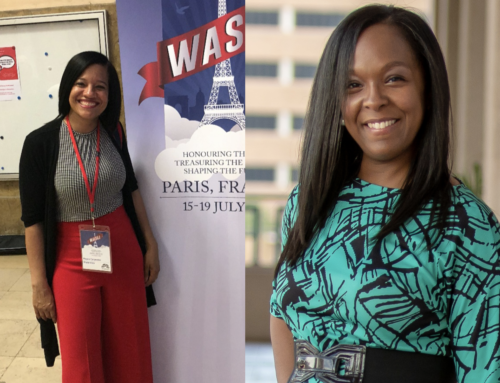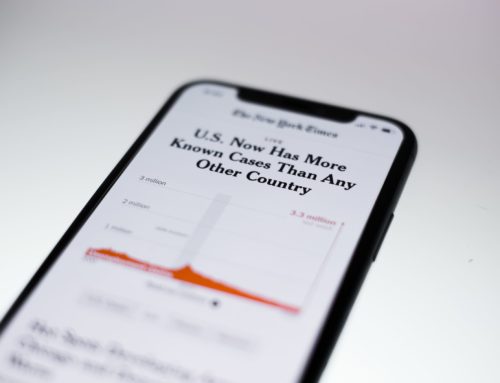Two Heads Are Better Than One: Collegiality and Supervision as Reflective Practice
The growth of any craft depends on shared practice and honest dialogue among the people who do it. Palmer, 2007 p. 144
In today’s world practitioners in every field are researching and promoting communities of practice and discovering the benefits of working in multi-disciplinary teams. With all this collaboration going on around us, why do we interpreters still find ourselves so isolated when we reflect on our work?Our work as interpreters is embedded within complex systems and consists of countless interpersonal layers. This complex work dynamic is impacted by the multitude of split-second decisions we make and is all seen from our own lens and world-view. Such complexity requires dedicated time and intentional unpacking. Yet many of us sit in our cars trying to sift out what happened at that last assignment or lie in bed turning that decision we made over and over with no resolution. Chatting with another VRS interpreter on a 10-minute break or debriefing with a team quickly in between freelance jobs lacks the necessary structure and time that’s required to delve into the richness of our work. We need another approach to fully engage in and benefit from professional reflective practice with our colleagues.
Supervision in Practice Professions
One research-supported approach to reflective practice is supervision, sometimes referred to as peer consultation or case conferencing (Dean & Pollard, 2013). Bishop and Sweeney (2006) define clinical supervision as “a designated interaction between two or more practitioners within a safe and supportive environment, that enables a continuum of reflective critical analysis of care, to ensure quality patients services, and the wellbeing of the practitioner” (as cited in Bishop, 2007, p. 1). Researchers in the medical and mental health fields have a long history of conducting clinical supervision and have documented benefits such as increased professional accountability, practitioner skill and knowledge development, and improved collegial/social support (Brunero & Stein-Parbury, 2008). The American Association of Marriage and Family Therapy, American Counseling Association, National Association of Social Workers, and American Psychological Association have all published standards for supervision and require it as a component of the licensing and credentialing (Corey, Haynes, & Moulton, 2014).
Within the interpreting field, scholars have made continual calls for the application of supervision for signed language interpreters. Back in 1986, Fritsch Rudser suggested the interpreting field adopt a practice of supervision, similar to that of health professionals, in an effort to improve standards and provide confidential spaces to discuss the work. Dean and Pollard (2001, 2005, 2011, 2013) have published extensively on supervision and the demand control schema (DC-S), a theoretical framework used to explore the interplay of complex workplace demands (environmental, interpersonal, paralinguistic, and intrapersonal) and controls (e.g. skills, knowledge, decisions, and resources) an interpreter brings to an assignment. Dean and Pollard suggest the DC-S framework be used as foundation for supervision in order for practitioners to access benefits such as: increased critical thinking skills, development of professional identity, enhanced ethical decision-making, a more thorough understanding of confidentiality in a practice profession, ensuring quality services for consumers, moving the field toward a practice profession model, reducing interpreter burnout, and supporting autonomy, agency, and self-determination for interpreters. However, to date, little research has been done on if and how supervision is happening in our field and what outcomes there are for interpreters who participate in DC-S supervision. It was with these questions in mind that I embarked on my graduate research.
Survey Design
In July 2017 I sent out an invitation to colleagues through email and Facebook to participate in an online survey if they met the following criteria: 18 years or older, identify as professional signed language interpreters, and had participated in at least three supervision sessions where the DC-S framework was used as the foundation for professional discourse. I used a non-probabilistic snowball sampling method commonly used in interpreting research (Hale & Napier, 2013) in which I asked participants to pass along the survey to other colleagues in their professional network who would also meet the criteria. A snowball sampling method was chosen because there is currently no centralized database of interpreters participating in supervision, making a probabilistic randomized sample impossible. The limitation of this method is that there is no way to guarantee the entire population was reached and there is a potential for professional networks to hold common characteristics not generalizable to the larger population. Despite these limitations, the results provide rich data about the 113 respondents’ experiences with supervision and a starting place for future research.
Research Findings
To contextualize the results of this study, a general profile of the survey respondents is as follows: 25-34 years of age (30.91% of respondents), has 11-15 years of experience as a professional interpreter (30%), has a bachelor’s degree (50%), holds a professional credential (97.3%), currently works in some capacity as a freelance/community interpreter (83.64%), and resides in Oregon (15.85%) or New York (15.85%). For a more thorough discussion of participant demographics see Curtis (2017).
When asked, “Why do you attend supervision?” respondents overwhelmingly (91.3%) cited the benefits they experienced as their primary reason for attending sessions. After analyzing the results, benefits were grouped into the categories of formative (enriched learning), normative (increased professional standards) and restorative (support for the wellbeing of the practitioner) (Proctor, 2000). Table 1 (below) provides a breakdown of the main benefits experienced by respondents.
 From “Supervision in signed language interpreting: Benefits for the field and practitioners” by Curtis, 2017, Western Oregon University, Monmouth, Oregon. Reprinted with permission.
From “Supervision in signed language interpreting: Benefits for the field and practitioners” by Curtis, 2017, Western Oregon University, Monmouth, Oregon. Reprinted with permission.
Recommendations and Moving Forward
A final salient finding from this research was that there may be barriers to accessing supervision and the results suggest there is not yet enough supply to meet demand. How then do we move forward in promoting the practice of supervision in our field? The first step would be to develop an infrastructure that would a) provide opportunities for supervision, b) develop criteria for the training and credentialing of supervision leaders, and c) serve as a hub for iterative research. New organizations such as the Interpreting Institute for Reflection-in-Action and Supervision (IIRAS) founded by Robyn K. Dean and Amanda R. Smith may be the first step in developing a mechanism for a more formalized practice of supervision in the interpreting field.
The results of my research indicate that practitioners who engage in peer group supervision experience improved collegial relationships; might these normative benefits help us increase collegiality, reducing instances of horizontal violence, and expanding and strengthening communities of practice? Might the evidence of restorative benefits of supervision such as support, validation, and stress management, help us mitigate the harmful impacts of vicarious trauma and burnout? Could formative benefits such as gaining a new perspective on our work, increasing control options for addressing work demands, and a providing a better understanding of decision making help recent graduates bridge the gap between graduation and certification? Perhaps by putting our heads together with our colleagues in reflective practice we can start to address these issues for the benefit of practitioners, consumers, and the field.
Jenna Curtis, MA, NIC
Jenna Curtis is a freelance ASL/English Interpreter in the Portland area, working primarily in post-secondary and community settings. She graduated from Western Oregon University with a BA in ASL/English Interpreting in 2011 and a MA in Interpreting Studies with a teaching emphasis in 2017. She is currently serving as President of the Oregon Registry of Interpreters for the Deaf and coordinates the Professional Supervision for Interpreting Practice Program (PSIP), which provides supervision and mentoring to recent graduates entering the field.
#twoheadsVIEWS18
See previous issues of VIEWS in our archives, located HERE







Leave A Comment
You must be logged in to post a comment.